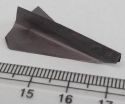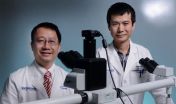(Press-News.org) As baby boomers reach their sunset years, shifting nationwide demographics with them, the financial burden of Alzheimer's disease on the United States will skyrocket from $307 billion annually to $1.5 trillion, USC researchers announced today.
Health policy researchers at the USC Leonard D. Schaeffer Center for Health Policy and Economics used models that incorporate trends in health, health care costs, education and demographics to explore the future impact of one of humanity's costliest diseases on the nation's population.
Other key findings include:
From 2010 to 2050, the number of individuals aged 70+ with Alzheimer's will increase by 153 percent, from 3.6 to 9.1 million.
Annual per-person costs of the disease were $71,000 in 2010, which is expected to double by 2050.
Medicare and Medicaid currently bear 75 percent of the costs of the disease.
"Alzheimer's disease is a progressive disease with symptoms that gradually worsen over time. People don't get better," said Julie Zissimopoulos, lead author of the study and an assistant professor at the USC Price School of Public Policy.
"It is so expensive because individuals with Alzheimer's disease need extensive help with daily activities provided by paid caregivers or by family members who may be taking time off of work to care for them, which has a double impact on the economy," she said.
"In late stages of the disease," she added, "they need help with personal care and lose the ability to control movement which requires 24-hour care, most often in an institutional setting."
Zissimopoulos collaborated with Eileen Crimmins of the USC Davis School of Gerontology and Patricia St.Clair of the USC Schaeffer Center on the study, which was posted online ahead of publication by the Forum for Health Economics and Policy on Nov. 4.
The team found that delaying the onset of Alzheimer's even a little can yield major benefits -- both in quality of life and in overall costs.
According to the U.S. Census Bureau, in 2012, 43.1 million Americans were 65 and older, constituting 14 percent of the population. By 2050, that number will more than double to 83.7 million, constituting 21 percent of the population.
Medical advances that delay the onset of Alzheimer's by five years add about 2.7 years of life for patients. By 2050, a five-year delay in onset results in a 41 percent lower prevalence of the disease in the population and lowers the overall costs to society by 40 percent, according to the team's research.
"Our colleagues in the medical field are working on ways to understand how the disease interferes with brain processes -- and then stop it," said Zissimopoulos, who is also an associate director at the USC Schaeffer Center. "Investment in their work now could yield huge benefits down the line."
INFORMATION:
The research was funded by the National Institutes of Health. The study can be found online here: http://bit.ly/1ugGe3e
A University of Colorado Cancer Center study published online this week in the journal Molecular Cancer Therapeutics reports anti-cancer activity in 10 out of 11 patient tumor samples grown in mice and treated with the experimental drug TAK-733, a small molecule inhibitor of MEK1/2. While the drug is conceived as a second-generation inhibitor in patients harboring the BRAF mutation, the study shows drug activity in melanoma models regardless of BRAF mutation status. Treated tumors shrunk up to 100 percent.
"The importance of this molecule is that it's a next-generation ...
A University of Texas at Arlington physics team is using their expertise in the field of optics and photonics to advance new methods in areas such as mapping the neural circuitry of the brain and guiding neurons to potentially repair damage in the body.
Samarendra Mohanty, an assistant professor of physics, leads the Biophysics and Physiology Lab in the UT Arlington College of Science. He is co-author on two papers published this month. In one published by the online journal PLOS ONE Nov. 10, researchers in Mohanty's lab described using a method called "two-photon optogenetic ...
Making a paper airplane in school used to mean trouble. Today it signals a promising discovery in materials science research that could help next-generation technology -like wearable energy storage devices- get off the ground. Researchers at Drexel University and Dalian University of Technology in China have chemically engineered a new, electrically conductive nanomaterial that is flexible enough to fold, but strong enough to support many times its own weight. They believe it can be used to improve electrical energy storage, water filtration and radiofrequency shielding ...
November 11, 2014 - Several lines of research have opened exciting new frontiers in scientific understanding and clinical management of bipolar disorder. Recent advances in bipolar disease research are described in this month's special issue of Harvard Review of Psychiatry. The journal is published by Lippincott Williams & Wilkins, a part of Wolters Kluwer Health.
Bipolar disease is a "prevalent, complex, and hard-to-treat illness [leading] to extreme and erratic shifts of mood, thinking, and behavior, with a very high risk of suicide as well as increased risks of dying ...
In multiple sclerosis, the immune system goes rogue, improperly attacking the body's own central nervous system. Mobility problems and cognitive impairments may arise as the nerve cells become damaged.
In a new study, researchers from the University of Pennsylvania and co-investigators have identified a key protein that is able to reduce the severity of a disease equivalent to MS in mice. This molecule, Del-1, is the same regulatory protein that has been found to prevent inflammation and bone loss in a mouse model of gum disease.
"We see that two completely different ...
DALLAS - November 11, 2014 - UT Southwestern Medical Center researchers have determined the specific type of cell that gives rise to large, disfiguring tumors called plexiform neurofibromas, a finding that could lead to new therapies for preventing growth of these tumors.
"This advance provides new insight into the steps that lead to tumor development and suggests ways to develop therapies to prevent neurofibroma formation where none exist today," said Dr. Lu Le, Assistant Professor of Dermatology at UT Southwestern and senior author of the study, published online and ...
As scientists probe the molecular underpinnings of why some people are prone to obesity and some to leanness, they are discovering that weight maintenance is more complicated than the old "calories in, calories out" adage.
A team of researchers led by the University of Pennsylvania School of Veterinary Medicine's Kendra K. Bence have now drawn connections between known regulators of body mass, pointing to possible treatments for obesity and metabolic disorders.
Their work also presents intriguing clues that these same molecular pathways may play a role in learning ...
Salivary mucins, key components of mucus, actively protect the teeth from the cariogenic bacterium, Streptococcus mutans, according to research published ahead of print in Applied and Environmental Microbiology. The research suggests that bolstering native defenses might be a better way to fight dental caries than relying on exogenous materials, such as sealants and fluoride treatment, says first author Erica Shapiro Frenkel, of Harvard University, Cambridge, MA.
S. mutans attaches to teeth using sticky polymers that it produces, eventually forming a biofilm, a protected ...
From this week's Eos: Scientists Engage With the Public During Lava Flow Threat
On 27 June, lava from Kīlauea, an active volcano on the island of Hawai`i, began flowing to the northeast, threatening the residents in Pāhoa, a community in the District of Puna, as well as the only highway accessible to this area. Scientists from the U.S. Geological Survey's Hawaiian Volcano Observatory (HVO) and the Hawai`i County Civil Defense have been monitoring the volcano's lava flow and communicating with affected residents through public meetings since 24 August. Eos recently ...
The majority of people - including healthcare professionals - are unable to visually identify whether a person is a healthy weight, overweight or obese according to research by psychologists at the University of Liverpool.
Researchers from the University's Institute of Psychology, Health and Society asked participants to look at photographs of male models and categorise whether they were a healthy weight, overweight or obese according to World Health Organisation (WHO) Body Mass Index (BMI) guidelines.
They found that the majority of participants were unable to correctly ...





